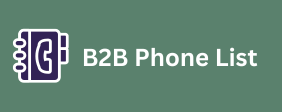In today’s data-driven marketing landscape. not all phone leads are created equal. Some contacts are eager to buy. others are simply exploring options. and still others may be misaligned with your offer entirely. Segmenting phone leads by intent (how ready they are to convert) and source (where they came from) allows businesses to tailor communication. prioritize outreach. and deploy the most effective engagement strategy for each group. This intelligent filtering turns generic lead lists into structured sales funnels. improves ROI. and ensures sales reps are focusing their energy on the most promising prospects.
Understanding Intent: High. Medium. and Low
Lead intent refers to the likelihood that a contact will convert into a paying customer. and it often aligns with behaviors such as website visits. content interaction. call duration. and past purchase history. You can group intent into three broad categories:
- High-Intent Leads: These include people who called in after viewing product pages. requested a demo. or completed a quote form. Their behavior indicates active buying interest. These leads should receive immediate follow-up by your top sales team.
- Medium-Intent Leads: These leads may have signed up for a webinar or browsed multiple pages without direct contact. While not ready to buy today. they’re worth nurturing with follow-up calls and educational SMS campaigns.
- Low-Intent Leads: Often collected through giveaways. purchased lists. or one-time interactions. these leads require more qualification. Use marketing automation. voicebot screening. or drip messaging to gauge if they’re worth escalating.
Segmenting by intent allows your team to assign the right level of effort and resources. avoiding wasted time on cold prospects while doubling down on hot leads.
Lead Source as a Segmentation Filter
Where a phone lead comes from can reveal a lot about their needs. expectations. and urgency. Here are common sources and how to handle them:
- Google Ads or Click-to-Call Campaigns: These leads are often highly motivated. especially if they’ve clicked on a high-intent keyword. They’re usually closer to making a decision and deserve fast responses.
- Social Media Campaigns: Leads from Facebook. Instagram. or TikTok may be more top-of-funnel. driven by curiosity or impulse. Use these for brand-building and retargeting but expect a longer sales cycle.
- Referral or Partner Networks: These leads come with built-in trust and can convert quickly if aligned with the product. Prioritize with personalized outreach.
- Offline Events or Trade Shows: Leads collected via QR codes or sign-ups at physical events may require validation. Schedule calls quickly while your brand is still top-of-mind.
- Cold Data Lists or Purchased Leads: These sources demand strong filtering through qualifying questions. IVR flows. or bahamas phone number list SMS-driven engagement before assigning to human sales reps.
Matching source insights with intent-level data allows marketers and sales teams to tailor their strategy with precision.
Best Practices for Effective Segmentation and Follow-Up
To truly leverage segmentation by intent and source. businesses should adopt the following practices:
- Tag and Track Every Lead: Use CRM tools to label leads by source (UTM parameters. form origin. campaign ID) and score them based on behaviors.
- Build Smart Segments: Create dynamic groups in your CRM like “High Intent – Paid Ads” or “Low Intent – Social Lead” for targeted automation.
- Customize Messaging: Use tone. urgency. and call-to-action based on the segment. High-intent leads can get direct sales the fragrance is then enhanced by a note of licorice offers; low-intent might need more value-building content first.
- Monitor Conversions by Segment: Regularly analyze which segments are converting and adjust your budget and tactics accordingly.
- Automate Initial Outreach: Use call routing. SMS triggers. or chatbots to handle early interactions. especially for low-intent or unqualified leads.
These actions turn raw phone data into a structured. performance-driven campaign engine.
Conclusion: Smarter Lead Handling. Higher ROI
Segmenting phone leads by intent and source is a foundational step for any performance marketing or sales operation that uses voice. SMS. or malaysia numbers list call outreach. It enables faster follow-up. more relevant conversations. and better resource allocation. Instead of treating every phone number the same. businesses and how likely they are to convert. With the right CRM tools. automation. and strategic segmentation. phone-based campaigns become smarter. more efficient. and significantly more profitable.

